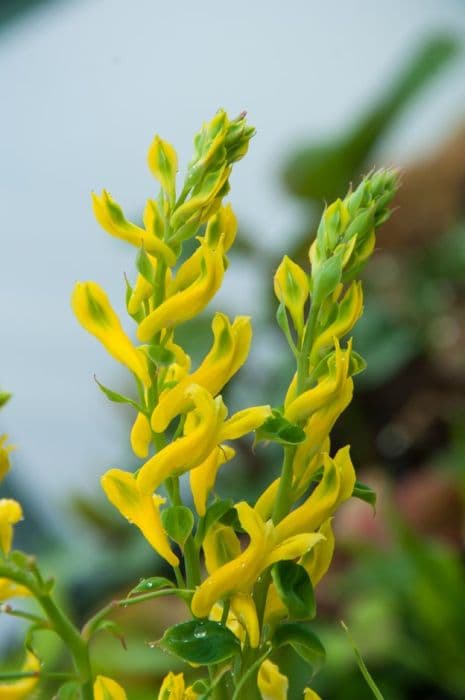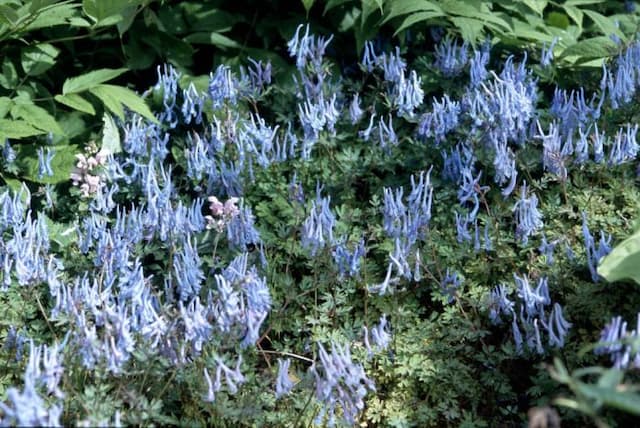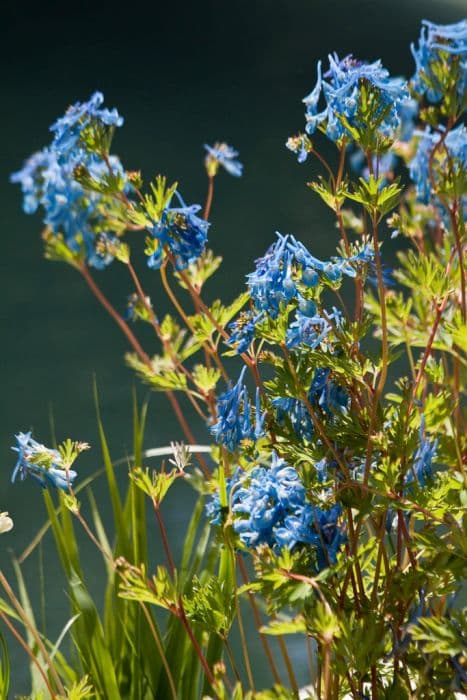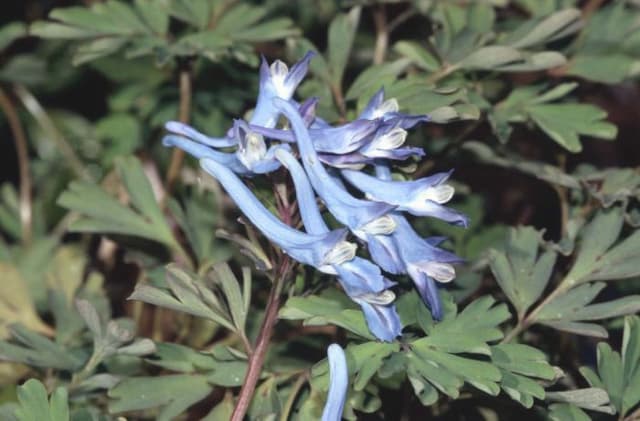Snow Poppy Eomecon chionantha
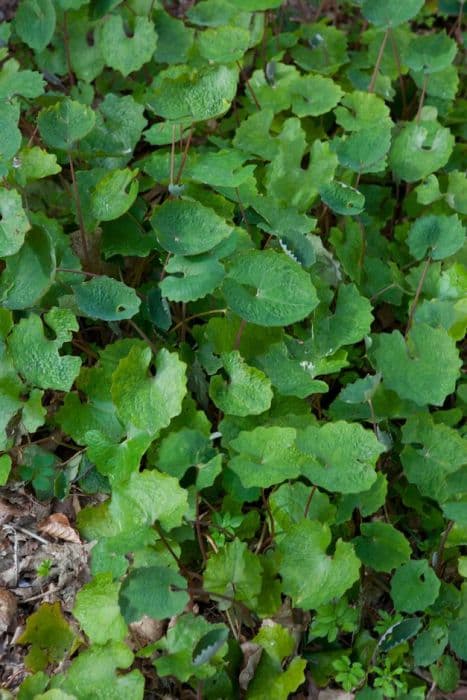
ABOUT
The snow poppy is a perennial plant known for its distinctive and attractive appearance. It bears heart-shaped leaves that are a deep green color, creating a lush backdrop for its flowers. These leaves are often slightly scalloped at the edges, adding to the visual interest of the plant. In contrast to the dark foliage, the snow poppy produces an abundance of bright white flowers. The blooms consist of four large petals, each with a delicate and satiny texture that can create a striking contrast in a shaded garden area. At the center of each flower, there is a cluster of yellow stamens, which attract pollinators and add a splash of color to the serene white petals. The overall impression of the snow poppy is one of simplicity and purity, with its white blooms evoking the tranquility of a snowy landscape, while the heart-shaped leaves bring a sense of warmth and life. Its bloom time typically occurs in the spring or early summer, depending on the climate and conditions in its growing environment.
About this plant
 Names
NamesFamily
Papaveraceae
Synonyms
Snow Poppy, Dawn Poppy
Common names
Eomecon hotei Masam., Meconopsis chionantha (Hance) Franch.
 Toxicity
ToxicityTo humans
The Eomecon chionantha, commonly known as the snow poppy, is not widely recognized for its toxicity to humans. There is little to no information suggesting that it poses a significant risk upon ingestion. However, as with any plant, individual allergic reactions or sensitivities could occur. If a person ingests part of the snow poppy and displays unusual symptoms, it is advisable to seek medical attention.
To pets
Information specific to the toxicity of the snow poppy (Eomecon chionantha) to pets is limited. This plant is not commonly listed as toxic to household pets such as cats and dogs. Despite the lack of reported toxicity, it is still wise to prevent pets from ingesting plants as they could potentially cause gastrointestinal upset or an allergic reaction. If a pet ingests part of the snow poppy and appears to suffer from any adverse effects, consult with a veterinarian as soon as possible.
 Characteristics
CharacteristicsLife cycle
Perennials
Foliage type
Deciduous
Color of leaves
Green
Flower color
White
Height
1-2 feet (0.3-0.6 meters)
Spread
1-2 feet (0.3-0.6 meters)
Plant type
Herb
Hardiness zones
7
Native area
China
Benefits
 General Benefits
General Benefits- Aesthetic Value: Eomecon chionantha, commonly known as snow poppy, adds visual appeal to gardens with its delicate white flowers and attractive foliage.
- Low Maintenance: Snow poppies are relatively easy to care for, requiring minimal upkeep once established in suitable conditions.
- Shade Tolerance: This plant is capable of thriving in shaded areas where other plants may struggle, making it a good choice for woodland gardens.
- Ground Cover: The snow poppy can serve as an effective ground cover, spreading to fill in areas and suppress weeds.
- Drought Resistance: Once established, Eomecon chionantha can tolerate periods of drought, making it suitable for xeriscaping in some climates.
- Pollinator Attraction: The flowers of the snow poppy can attract pollinators such as bees, which are essential for the health of many ecosystems.
- Soil Erosion Control: By spreading and forming a mat, it can help stabilize soil and prevent erosion on slopes or in areas prone to soil loss.
- Seasonal Interest: With its flowering period in the spring, snow poppy provides seasonal interest and adds to the diversity of blooming times in a garden.
 Medical Properties
Medical PropertiesThis plant is not used for medical purposes.
 Air-purifying Qualities
Air-purifying QualitiesThis plant is not specifically known for air purifying qualities.
 Other Uses
Other Uses- Eomecon chionantha, known as snow poppy, can be used in landscaping for its attractive foliage and flowers, suitable for shade gardens or woodland settings.
- Snow poppy's rhizomatous growth habit makes it useful for erosion control on shady slopes where other plants might not thrive.
- The plant can function as a natural groundcover, providing a green carpet effect and suppressing weed growth in garden beds.
- Its unique white flowers can provide a subtle contrast in floral arrangements, especially in compositions that require a delicate and natural look.
- The snow poppy can be used in educational settings, such as botanical gardens, to demonstrate the variety of Papaveraceae family members.
- Plant enthusiasts might cultivate snow poppy as part of a collection focused on rare or lesser-known ornamental plants.
- In cooler temperate climates, snow poppy can be used to add winter interest in gardens when other plants are dormant.
- The leaves of the snow poppy can be used as a green backdrop in photography, particularly macro photography, to highlight smaller subjects.
- Cultural significance can be attributed to snow poppy in certain regions, where it might be involved in local traditions or ceremonies for its beauty.
- By attracting pollinators such as bees during its flowering season, snow poppy can play a role in supporting local biodiversity within an ecosystem.
Interesting Facts
 Feng Shui
Feng ShuiThe Snow Poppy is not used in Feng Shui practice.
 Zodiac Sign Compitability
Zodiac Sign CompitabilityThe Snow Poppy is not used in astrology practice.
 Plant Symbolism
Plant Symbolism- Purity - Eomecon chionantha, commonly known as the snow poppy, features delicate white blooms that can symbolize purity and innocence, much like white flowers in many other traditions.
- Resilience - As snow poppies can emerge in cool temperatures and still thrive, they can symbolize resilience and the ability to endure challenging situations.
- Rare Beauty - Because snow poppies are not as commonly found as some other flowers, they can represent rare beauty or the uniqueness of an individual or situation.
- Peace - The snow poppy's gentle appearance may bring a sense of peace and calm, much like the quiet of a snowfall, thus symbolizing tranquility.
- New Beginnings - Blooming in early spring, the snow poppy can represent new beginnings and the start of a new cycle, reminiscent of the renewal that comes after winter.
 Water
WaterFor Snow Poppy, regular watering is needed to maintain consistent soil moisture, especially during the growing season. Typically, water this plant when the top inch of soil feels dry to the touch, which may result in watering approximately once a week. Employ a gentle pour around the base of the plant, ensuring you do not drench the foliage. The amount may vary, but a general guideline is to provide around 16 ounces of water for smaller plants and up to 1 gallon for larger ones each time you water, depending on soil drainage and environmental conditions.
 Light
LightSnow Poppy thrives in partial shade, so place it in a spot where it receives dappled sunlight or light filtered through a canopy. Avoid direct, harsh sunlight as it can scorch the leaves. An ideal location is one where the plant receives morning light and is shielded from the intense afternoon sun.
 Temperature
TemperatureSnow Poppies prefer cooler temperatures and flourish in a range that is typically between 50°F and 75°F. They can tolerate minimum temperatures down to around 32°F, but frost is not advisable. Protect these plants from extreme heat, as temperatures consistently above 80°F can stress them.
 Pruning
PruningPruning Snow Poppy is primarily for aesthetic purposes and to remove any spent flowers or damaged foliage. Prune lightly after flowering to tidy up the plant and promote a compact growth habit. Typically, pruning is best done in the late fall or early spring before new growth begins.
 Cleaning
CleaningAs needed
 Soil
SoilSnow poppy prefers well-drained soil with plenty of organic matter. A good mix could be peat, compost, and perlite or sand with a pH of 5.5 to 7.5.
 Repotting
RepottingSnow poppies do not need frequent repotting and should be repotted every 2 to 3 years or when they outgrow their containers.
 Humidity & Misting
Humidity & MistingSnow poppy thrives in moderate to high humidity but is adaptable to lower humidity levels as long as the soil moisture is adequate.
 Suitable locations
Suitable locationsIndoor
Place in bright, indirect light and keep soil moist.
Outdoor
Partial shade, sheltered location, moist, fertile soil.
Hardiness zone
5-9 USDA
 Life cycle
Life cycleSnow Poppy (Eomecon chionantha) typically begins its life cycle as a seed, which germinates when conditions of moisture and temperature are favorable. Upon germination, the seedling develops a root system and simple leaves in its initial vegetative growth stage. As it matures, Snow Poppy forms a clump of heart-shaped, dark green foliage, with flowering stems emerging in the spring to early summer. The flowers are white with a yellow center and are followed by fruit capsules containing numerous small seeds. After flowering and seed set, Snow Poppy may enter a period of dormancy, especially in regions with hot summers or cold winters. The plant can spread through its underground rhizomes, forming colonies, and through seed dispersal, repeating its life cycle with new growth in subsequent seasons.
 Propogation
PropogationPropogation time
Spring to summer
Snow Poppy, known scientifically as Eomecon chionantha, is commonly propagated through division, which is best done in the spring. To propagate by division, carefully lift the plant from the soil, ensuring that you have a good portion of roots attached to each section. Gently separate the root mass into smaller clumps, each with several shoots and a healthy supply of roots. These individual clumps can then be replanted in the garden or into pots filled with well-draining soil. Water the new divisions thoroughly to help establish them, generally providing about an inch (2.54 cm) of water per week, unless rainfall is sufficient. This method leverages the plant's natural tendency to spread and provides a quick means of increasing your stock of Snow Poppies.
